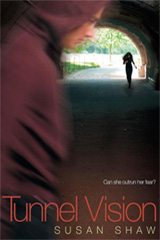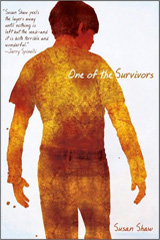Black-Eyed Suzie
by Susan Shaw
ISBN-10: 1590785339
“I live in a box with four sides, tall and brown. I cannot get out.” With these words, readers enter the world of Suzie, a dark-eyed twelve-year-old who desperately needs to feel safe and worthy of love. Suzie’s “box” is a psychological prison. In it, she sits with arms wrapped around her legs, feet on the cushion of a gold living room chair, knees pressed against her chin. She can no longer eat, sleep, speak, or walk. Although she doesn’t know it, living in a box threatens her life. Suzie’s mother, a singer who feels she sacrificed her career in order to raise a family, insists that Suzie is just “going through a stage.” Suzie’s father is rarely home. Only Suzie’s older sister Deanna makes an effort to understand what’s happening, but even Deanna can’t help. Life begins to change when Suzie’s Uncle Elliot stops by unexpectedly. Realizing at once that Suzie is in serious trouble, Elliot demands that she be taken to a hospital.
Suzie suddenly finds herself in St. Dorothy’s, a mental hospital where she begins a long and fear-filled journey. Here, she meets an understanding therapist named Stella and a boy named Joshua, who offers his friendship while struggling with a tragedy of his own. However, Suzie also meets Karen, a patient on the ward who both terrorizes and challenges her. To make sense of her world, Suzie must piece together a puzzle that involved seemingly unrelated clues—a broken bicycle, a torn picture, peacock feathers, ducks swimming in a pond on the hospital ground, a batch of burned cookies. When the pieces finally come together, they reveal a secret that will change Suzie’s life forever. However, they also give her a chance to regain her voice and reclaim her spirit.




